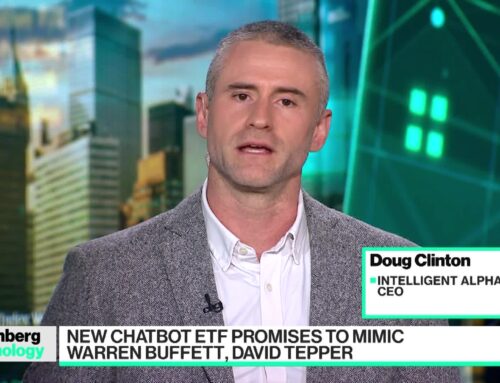Can Louisiana cut emissions without hurting its energy industry? These groups aim to figure it out.
September 19, 2024
Michael Mazzola spends a lot of his time these days thinking about two monumental challenges: How can Louisiana produce more energy to meet growing global demand? And how can the state slash the carbon emitted from refineries, petrochemical plants and other industries at the same time?
Those seemingly contradictory questions are as big as they come, so it’s a good thing that Mazzola, the newly appointed executive director of Future Use of Energy in Louisiana has up to $160 million from the federal government to spend looking for answers.
Announced in January and authorized by the Biden administration’s 2022 CHIPS and Science Act, the LSU-led FUEL grant is intended to develop solutions to energy challenges while creating jobs with a focus on cutting the emissions of Louisiana’s industrial corridor between New Orleans and Baton Rouge. The project has 50 public and private partners statewide, including Tulane University. Its primary tool will be writing checks for research, training, technology development and workforce development.
“One of the most challenging decisions made in human history is to decarbonize the global energy industry, and it’s got to be done in 30 years,” Mazzola said. “It took 150 years to build this industry and all of this infrastructure.”
As Mazzola gets FUEL up and running, the recipients of another federal grant — $50 million from the Economic Development Administration for the H2theFuture partnership — broke ground Tuesday on the new Louisiana Future Energy Center near the University of New Orleans.
FUEL will make investments in carbon capture, transport and storage technology and training. It also will focus on hydrogen, water management and sustainable manufacturing. H2theFuture, which received $25 million from the state in addition to federal funds, initially was focused on clean hydrogen production, but it has widened its lens to include all new energy innovations. It will spend money on research, business development, workforce training and public-private partnerships.
The efforts of both groups are based on the very real danger for Louisiana that unless one of its biggest industries can figure out how to transition to a low-carbon — and eventually no-carbon — future, jobs, businesses and an entire economic sector is at stake.
New FUEL executive director Michael Mazzola on Friday, August 2, 2024 in Baton Rouge, Louisiana.
“Louisiana has the very best combination of natural assets, human capital and tradition — even the Saints are black and gold because the person who founded them was an oil man,” said Michael Hecht, Greater New Orleans Inc. CEO and leader of the H2theFuture grant application. “But we also recognize the urgency of providing energy in a way that has less impact on the natural environment. That creates an opportunity.”
A big slice of Louisiana’s economy
In Louisiana, 250,000 jobs are tied to the production of oil, gas, petrochemicals and plastics, according to industry groups. The state is home to 15 oil refineries, representing roughly 20% of the country’s refining capacity, and about 150 petrochemical plants. The U.S. Energy Information Administration said the state ranks third in natural gas production behind Texas and Pennsylvania.
“They say that all roads lead to Rome, but all pipelines lead to Louisiana,” said Tulane business professor Pierre Conner, who is contributing to the FUEL project. “If you look at a map of the Louisiana gas pipe network, you’ll see that we’re a gathering, processing and distribution point.”
The Louisiana Mid-Continent Oil & Gas Association, an industry trade group, says more than 20% of the state’s gross domestic product is linked to fossil fuel production and the petrochemical plants that make plastics, chemicals and other products derived from oil and natural gas. But it’s unclear how long that will remain the case.
Global efforts to curb reliance on oil and gas, along with competition from new energy-producing technologies outside Louisiana’s borders, have upended the status quo. Research company Bloomberg New Energy Finance estimates that the world will need to spend $215 trillion to “zero out” the world’s carbon emissions by 2050 and avoid climate disaster.
Investments linked to renewable energy in Louisiana certainly are on the rise. Australian graphite company Syrah began producing material for Tesla’s electric vehicle batteries at a facility in Vidalia earlier this year, boosted by a $220 million grant and $102 million loan from the U.S. Department of Energy.
In May, Cut Off-based shipbuilder Edison Chouest Offshore christened the first U.S.-built vessel designed to service offshore wind projects.
Last year, Arizona-based First Solar began building a $1.1 billion solar panel manufacturing facility near New Iberia. The facility, expected to open in 2026, is set to employ 700 people with an annual payroll of $40 million.
In total, roughly $60 billion in planned energy transition projects have been announced since 2018, according to GNO Inc., and about $10 billion in federal funds have been committed to projects in the state.
‘Future proof’ Louisiana’s energy industry
Mazzola was hired as the FUEL executive director in July and is now staffing a small office at the LSU Innovation Park in Baton Rouge. He said the FUEL grant is designed to “future proof” Louisiana’s energy industry, which is located in one of the most productive oil and gas regions in the world.
Energy companies are trying to find ways to lower the emissions involved in producing fossil fuels. And petrochemical companies are looking for ways to use carbon dioxide to make other value-added products or, controversially, to store it deep underground in Louisiana and other areas.
FUEL’s role will be to help bridge the gap between the lab and the marketplace.
“There’s a whole industry growing up that is largely based on new technologies and startup companies,” he said.
Other companies in Louisiana are taking on the challenge of cutting emissions head on, with wind projects in the Gulf of Mexico, battery projects for electric vehicles, and in finding ways to power factories with hydrogen instead of natural gas.
Many believe in the potential of hydrogen, which is an energy carrier as opposed to an energy source. It can be made from fossil fuels, biofuels or renewables like wind and solar power.
Companies are researching scalable ways to produce “green” hydrogen, which means using renewable energy to split water into hydrogen and oxygen, creating no carbon dioxide in the process. “Grey” hydrogen, which is much more common, is produced using fossil fuels.
H2theFuture is helping fund a nearly $7 million fuel barge at the Port of South Louisiana that will supply ships with e-methanol, which is made by combining green hydrogen with captured carbon dioxide.
“The energy economy has many different components and if you’re going to decarbonize the whole thing, you have to view each one of those market segments or those components and really drill down and see how they work and what are the best ways to decarbonize that part of it,” Mazzola said.
Mazzola hopes FUEL will be able to announce its first awards by the end of the year.
Its cooperative agreement with the National Science Foundation dictates that it will get increments of funding every two years. Depending on the progress, the foundation may choose to continue to supply the next two-year increment or not.
Mazzola said the mission is to get the money to the people who can make good use of it as quickly as possible.
Search
RECENT PRESS RELEASES
Related Post




